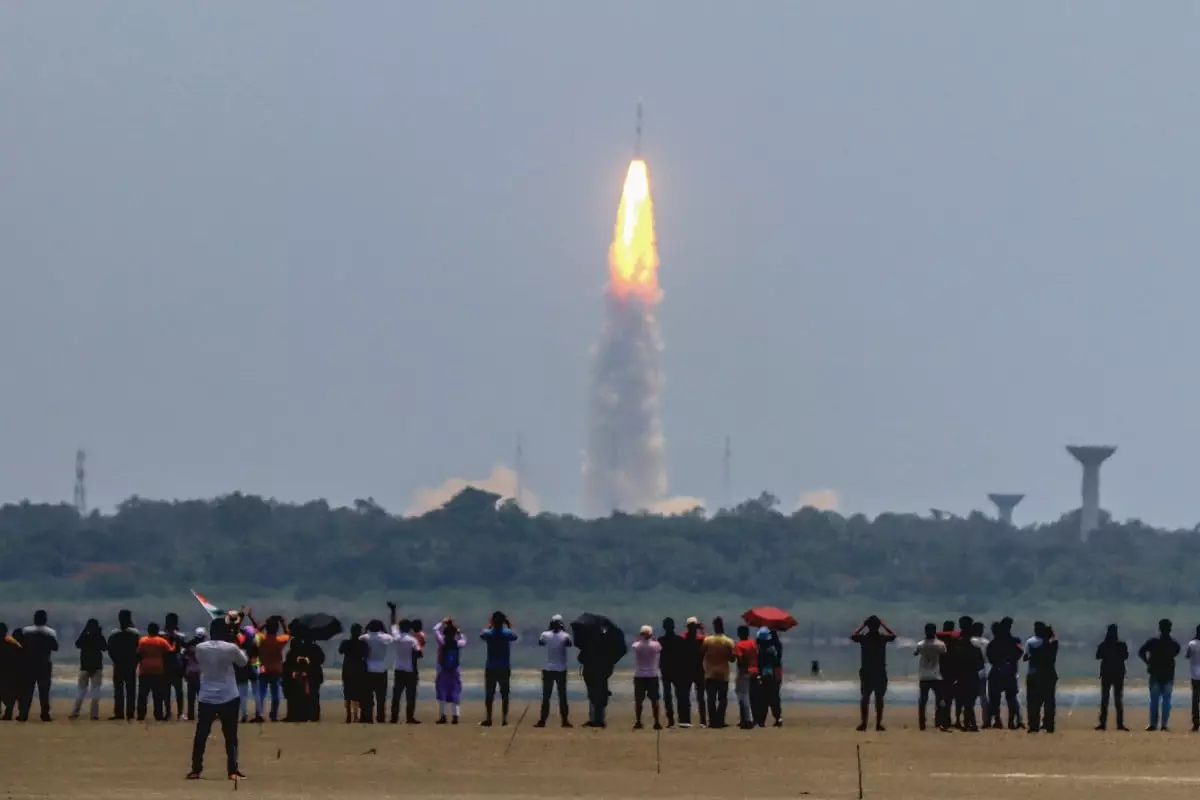The Indian Space Research Organisation (ISRO) has recently achieved a significant milestone in space exploration with the successful completion of its inaugural solar mission, Aditya-L1. Prime Minister Narendra Modi announced on Saturday that the spacecraft has reached its destination at Lagrange Point 1 within the expected four-month timeframe. This mission marks a remarkable achievement for India’s scientists and showcases their relentless dedication to complex space endeavors.
Aditya-L1, named after the Hindi word for the Sun, was launched on September 2 last year. After covering approximately 1.5 million kilometers (930,000 miles) over the span of four months, the spacecraft positioned itself at Lagrange Point 1, where it will now commence its comprehensive study of the Sun. Equipped with seven payloads, Aditya-L1 will conduct remote sensing and in-situ observations to gain insights into the solar corona and its influence on space weather.
Lagrange Point 1 is strategically important for Aditya-L1 as it provides several advantages for the spacecraft. The gravitational forces at this point allow objects to remain relatively stationary, minimizing the fuel consumption required for the spacecraft’s operations. Moreover, the Lagrange Point offers a unique vantage point for observing and studying the Sun, enabling scientists to gather crucial data and expand our understanding of solar phenomena.
One of the primary objectives of the Aditya-L1 mission is to investigate the impact of solar radiation on satellites in orbit. With the increasing number of satellites being deployed, including projects like Elon Musk’s Starlink communications network, it is crucial to understand how solar activity affects these assets. By studying the Sun and its behavior, scientists aim to mitigate potential disruptions caused by space weather phenomena.
The Sun’s influence extends beyond its immediate surroundings, reaching Earth’s orbit and having an impact on satellites. Manish Purohit, a former ISRO scientist, emphasizes the importance of space weather knowledge, stating, “We definitely need to know more about the Sun, as it controls the space weather.” As low Earth orbit becomes increasingly crowded with satellites, understanding space weather becomes vital for various applications, including internet connectivity, disaster warning systems, resource utilization, and more.
Positioning Aditya-L1 at Lagrange Point 1 serves as an early warning system for space weather events originating from the Sun. By having a spacecraft stationed at this advantageous location, scientists gain a crucial one-hour advantage in predicting and preparing for upcoming solar storms. This information is invaluable for safeguarding satellites, spacecraft, and other assets orbiting our planet.
Aditya-L1 is just one of the many ambitious projects ISRO has planned for the future. Notably, the organization is working towards its first human space mission and collaborating with NASA on the Low-Earth Orbit Observatory System, known as NISAR. NISAR holds the potential to revolutionize our understanding of Earth by mapping the entire planet every 12 days. This data will contribute to enhanced knowledge in various fields, including ecosystems, ice mass, vegetation biomass, sea level rise, and natural hazard identification.
The successful completion of India’s Aditya-L1 solar mission marks a remarkable achievement in the field of space exploration. ISRO’s scientists have demonstrated their unwavering dedication and expertise in executing intricate space missions. Aditya-L1’s study of the Sun and its impact on space weather will not only enhance our scientific understanding but also contribute to the protection and continued development of satellite-based technologies and applications. As India continues to push boundaries in space exploration, the Aditya-L1 mission represents a significant step toward unraveling the mysteries of our solar system.


Leave a Reply